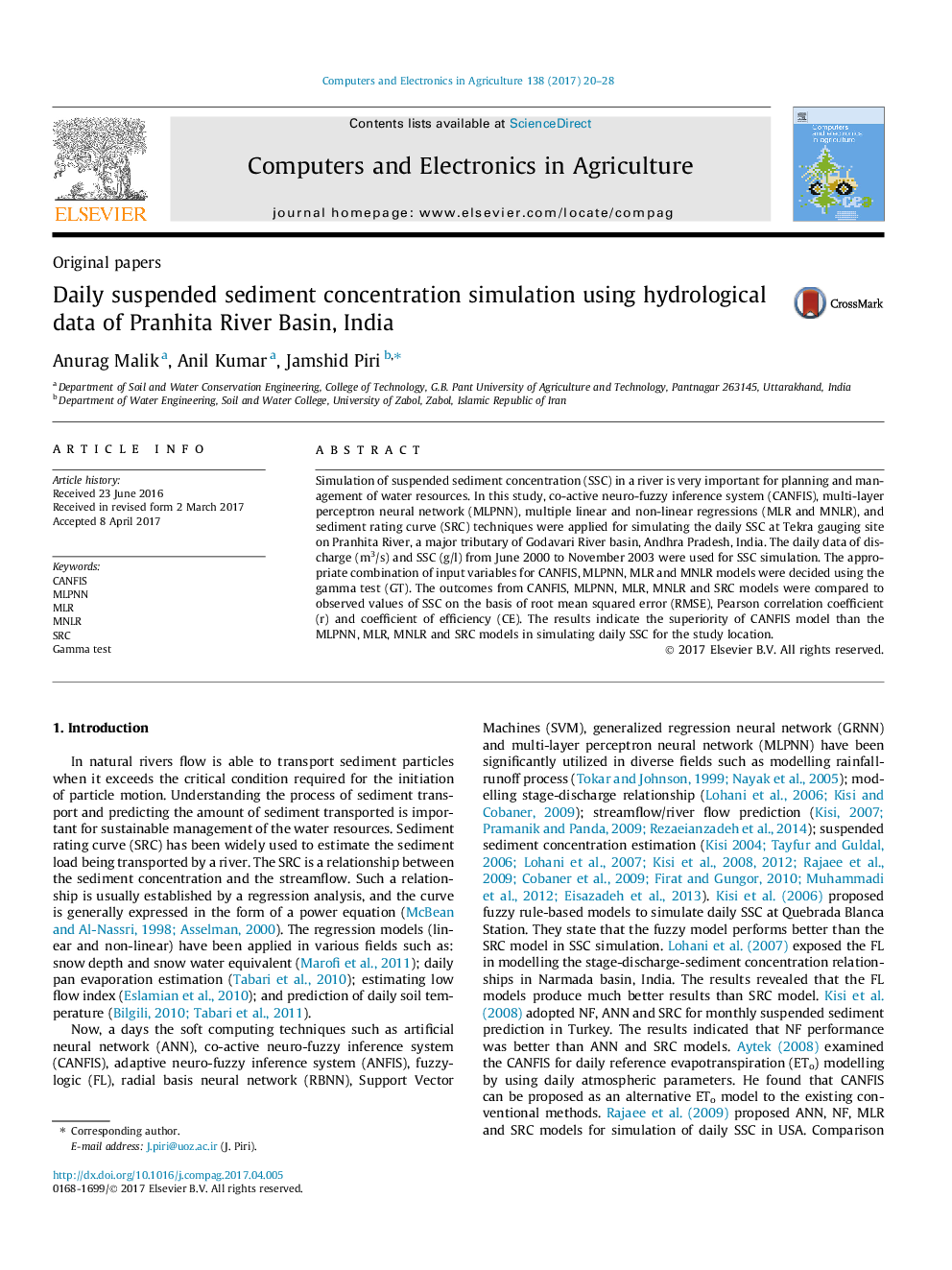| Article ID | Journal | Published Year | Pages | File Type |
|---|---|---|---|---|
| 4759121 | Computers and Electronics in Agriculture | 2017 | 9 Pages |
Abstract
Simulation of suspended sediment concentration (SSC) in a river is very important for planning and management of water resources. In this study, co-active neuro-fuzzy inference system (CANFIS), multi-layer perceptron neural network (MLPNN), multiple linear and non-linear regressions (MLR and MNLR), and sediment rating curve (SRC) techniques were applied for simulating the daily SSC at Tekra gauging site on Pranhita River, a major tributary of Godavari River basin, Andhra Pradesh, India. The daily data of discharge (m3/s) and SSC (g/l) from June 2000 to November 2003 were used for SSC simulation. The appropriate combination of input variables for CANFIS, MLPNN, MLR and MNLR models were decided using the gamma test (GT). The outcomes from CANFIS, MLPNN, MLR, MNLR and SRC models were compared to observed values of SSC on the basis of root mean squared error (RMSE), Pearson correlation coefficient (r) and coefficient of efficiency (CE). The results indicate the superiority of CANFIS model than the MLPNN, MLR, MNLR and SRC models in simulating daily SSC for the study location.
Keywords
Related Topics
Physical Sciences and Engineering
Computer Science
Computer Science Applications
Authors
Anurag Malik, Anil Kumar, Jamshid Piri,
